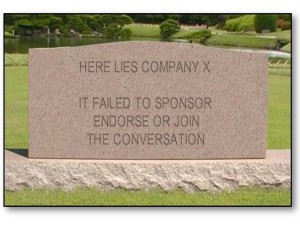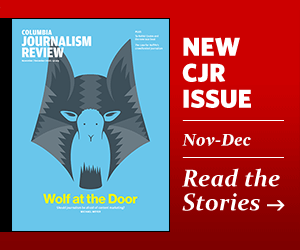Ritson versus Sharpe and a story about geomorphology (and a tsunami)
I have just received an email with the confirmed line-up for this year’s Festival of Marketing. My first reaction to this was that I can’t believe it is nearly a year since the last one. It also reminded me that the headline event last year was a battle of the professors between Byron Sharpe and Mark Ritson. Unfortunately I missed it, but for those not in the know the basis for said battle is Sharpe’s advocacy of mass communication versus Ritson’s focus on targeting and segmentation. I was also reminded of this conflict because Byron Sharpe was featured on Adam Fraser’s EchoJunction podcast a couple of weeks ago. I must confess I haven’t read Sharpe’s famous book ‘How Brands Grow’ so was hopeful that the podcast might give me a shortcut. I also availed myself of the opportunity to listen to the Prof. Ritson’s appearance on the same podcast some time previously.
On the basis of the podcasts, I would say I came out more of a Ritsonist. Of course, as Ritson himself has pointed out, it is not a question of either/or. A brand has to be able to address its entire audience and its ability to do this essentially defines it status as a brand. But an audience is not homogeneous, either in terms of attitudes or behaviours over time – which creates the requirement for targeting.
In fact, according to my theory of the future of marketing in a digital world, brands face two challenges: first is redefining the concept of an audience (and indeed a segment of such) and becoming more adept at convening these audiences rather than renting access to them; and the second is understanding how to create value from relationships with consumers as individuals (the world of distribution and the world of connection).
I guess the reason I came out on Ritson’s side was because I very much liked his scathing view of social media and assessment that most marketers have simply been jumping on a series of digital bandwagons, but also because there was something in Sharpe’s absolutist approach that I was uncomfortable with. First was his contempt for the idea of the niche and his dismissal of a niche brand as an unsuccessful brand. We are entering a time when the competitive advantages associated with being big are reducing and the ability to be small is increasing. Many big brands are facing the long-term challenge of death by a thousand niches. Second, while I am all in favour of developing a more rigourous, data driven approach to marketing I couldn’t help but get the feeling the Professor Sharpe was restricting his field of analysis according to the ability to gather or analyse the available data and disregarding evidence outside of this, not because the data was telling him to do this, but because the data was not available (or not available to measure in the way he wished).
It reminded me of a story about data, measurement techniques and assumptions that was doing the rounds back when I was studying for my degree. I studied geography, with a specialism in geomorphology (rivers, erosion and stuff). At the time, geomorphology had a problem in that we could look around and see evidence that erosion had happened, but couldn’t see it, and measure it, actually happening. (This is a bit like the issue of knowing that half of the marketing budget works, but not knowing which half). The assumption was therefore that erosion was a very slow process – water dripping on a stone – and the reason we couldn’t detect it was that we hadn’t had sufficiently sophisticated techniques or equipment to measure it.
Geomorphology had another problem in that it was, at heart, an observational science: knock-kneed bearded blokes in hobnail boots and khaki shorts wandering around with notebooks looking at things and thinking about stuff. This was deeply unfashionable back in the 60s and 70s at a time when computers were becoming established in academia. You couldn’t be a proper scientist if you didn’t run what we then thought of as large amounts of quantitative data through computer programmes.
So an attempt was made to address these two problems by wiring-up a hill slope (geomorphologists were, and probably still are, obsessed with slopes) with all the latest detection equipment, feeding all the data into a computer, pressing the button and finally nailing the causes of erosion. This slope was going to be so closely monitored that an ant couldn’t fart without us knowing about it. Who knows, perhaps farting ants would be revealed as the culprits?
Anyway, the equipment was put in place, turned on, and revealed precisely nothing. A total flatline. No erosion was taking place. And so it continued for weeks on end until after a prolonged period of heavy rain a landslide washed all the equipment away. It was as though the slope was saying “so you wanted to measure me? Well measure this sucker”.
Of course the real issue was one of false assumptions (erosion as a slow process), a restriction of the field of investigation to those areas from which data could be extracted, a desire to use new bright shiny techno things, plus a distaste for conventional, less data-driven, analysis. Geomorphologists have subsequently realised that erosion is often not a slow process, but an an infrequent, catastrophic process. The slight irony is that an old fashioned knock-kneed bloke with a certain level of experience, wandering around with a notebook, looking at stuff, noting slope angles, digging some holes to determine soil depth and composition and sticking a finger in the ground to get a sense of soil moisture levels could actually develop a much more effective functional understanding of what was going on, what had previously happened and what was likely to happen in the future that someone possessed of all the latest measurement techniques and data.
This is not to say that we should eschew evidence-based marketing, but we need to take about what assumptions we make, what evidence we seek and, crucially, not discard evidence simply because it is difficult to measure or crunch through an analysis programme.
And also, in relation to his dismissal of the niche, I have a suspicion that Sharpe’s book may come to be regarded more as a piece of historical analysis than as a guide to the future. Perhaps it should be renamed “How Bands Grew”.
However, there is a geomorphological post-script to this story which does favour Prof. Sharpe. In relation to catastrophic geomorphological events, we now know that the east coast of Australia was once devastated by a massive tsunami with waves in excess of 100 metres high. Ths was caused by the collapse of one of the islands in the Hawaiian archipelago – a phenomena know as a long run-out landslide. And the bad news is that this is going to happen again in the not too distant future, geomorphologically speaking. So Prof. Ritson in Melbourne could be in trouble, but Prof. Sharpe around the corner in Adelaide should be OK especially if he sets up house up in the Flinders Ranges.


 It has just been announced (in a Tweet of course) that Twitter CEO
It has just been announced (in a Tweet of course) that Twitter CEO 

 Marketing has always been a cold business. We may not have realised this in the same way that our ancestors in the Ice Age didn’t think it was especially chilly. As they were huddled round their fires, drapped in layers of woolly mamoth skin, they were not dreaming of laying out on a sunny beach in their fur-lined swimwear. We only call it the Ice Age because we are looking back at it from the perspective of a warmer world. We can now see that pretty much eveything our ancestors were doing in the Ice Age revolved around the fact that keeping warm was difficult, but to the folks at the time, this was just business-as-usual.
Marketing has always been a cold business. We may not have realised this in the same way that our ancestors in the Ice Age didn’t think it was especially chilly. As they were huddled round their fires, drapped in layers of woolly mamoth skin, they were not dreaming of laying out on a sunny beach in their fur-lined swimwear. We only call it the Ice Age because we are looking back at it from the perspective of a warmer world. We can now see that pretty much eveything our ancestors were doing in the Ice Age revolved around the fact that keeping warm was difficult, but to the folks at the time, this was just business-as-usual.


